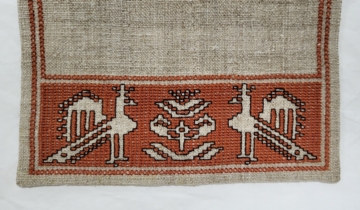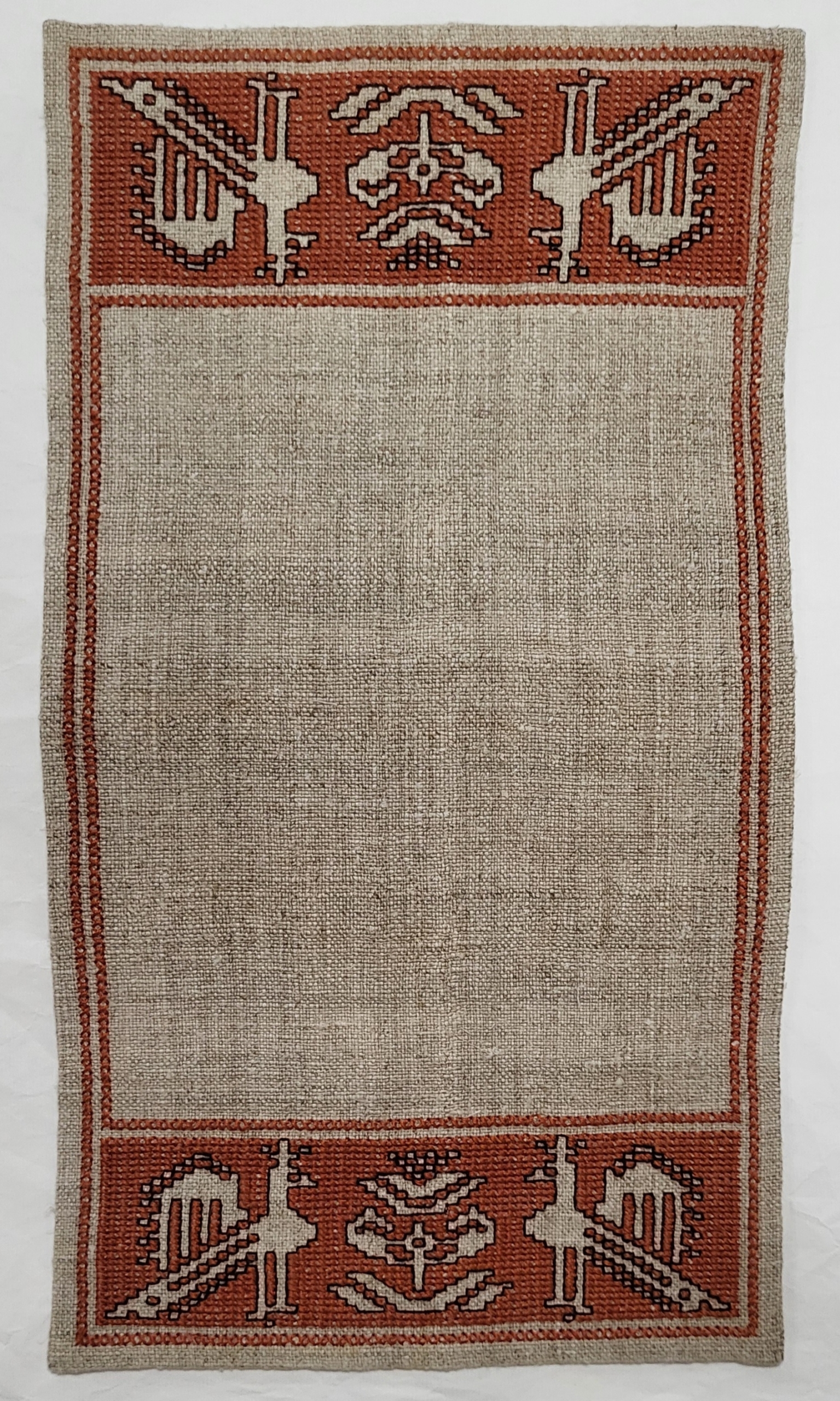Assisi embroidery is a form of counted threadwork, characterized by its use of negative design. This is when the background is filled with embroidery stitches and the main motifs are left as voids, i.e. without stitching. This needlework style is associated with the Italian city of Assisi, where the unique visual style originates. Depending on what you’re reading there are a number of origins, all as definitive as the last. One source says that Assisi embroidery is “based on an ancient Italian needlework tradition”. Another claims that the “motifs [are] based on Renaissance imagery”. A third source says it is based in “medieval symbology which you see everywhere in the churches in Italy”.
Upon first inspection of one of the Assisi needlework pieces in the MCML collection, I was surprised to have recognized the motifs and stylization, not as Italian but from the tradition of rug making in nomadic communities from central and west Asia (For simplicity we’ll refer to these as “Persian Rugs”). While I do believe this embroidery style is unique to Assisi and the surrounding region, the idea that the stylization and motifs formed entirely in Italy is incorrect.

Assisi Embroidery is a great opportunity to discuss “places of cultural contact”, a methodology used in archeology and architecture that demonstrates the transmission and adoption of new ideas and technologies, usually leading to a change in those systems.
An example of this in archeology is the settlement where the Assiniboine and Red Rivers meet, located in Treaty 1 Territory (present-day Winnipeg). The Forks was a key point and rest stop along the seasonal migration route from northern forests to southern plains. It was a place of cultural contact for the Nakoda, Cree, Anishinaabe, and Dakota, and facilitated transcontinental trade. The Forks, therefore, has its own distinct history and culture as a result of being a point of cultural transmission for these nations for thousands of years.
Similarly, the Mediterranean Sea with all of its bordering nations and cultures has created innumerable places of cultural contact through history. Missing from these many interpretations of Assisi Embroidery’s history are the empires that spanned and the vast network of trade that permeated what is now Europe, North Africa, the Middle East and West Asia.

Assisi Embroidery table runner, maker unknown, mid 20th C.
Techniques and styles similar to Assisi Embroidery also appear in the Iberian Peninsula (known as “reversa”), Central Spain (known as Toledo work, after the city’s name), and Morocco (known as Fes work, after the city’s name). It is no coincidence that areas greatly influenced by Islamic rule and trade would develop styles that are so similar.
In my experience, the cultural contact methodology is not often seen in the study of European art history. It is a function of colonialism and white supremacy that Europe, past and present, has the greatest innovators, and the rich cultures that were uninfluenced by those seen as lesser. In recent years this trend has been changing, certainly, Architectural History has largely adopted this framework. Though craft history will likely be slow to follow suit as there are few art historians that are so narrowly focused.
This however does not mean that you can not decolonize your own practice. Art is not made in a vacuum, examine your work, or inspirations for stories of cultural contact or influences you may not have noticed before.
Written by Sonia Gaiess, MCML Collections Management Assistant 2022-2023
Funding for this blog post was provided in part by the Community Museums Project Grant (Province of Manitoba).



